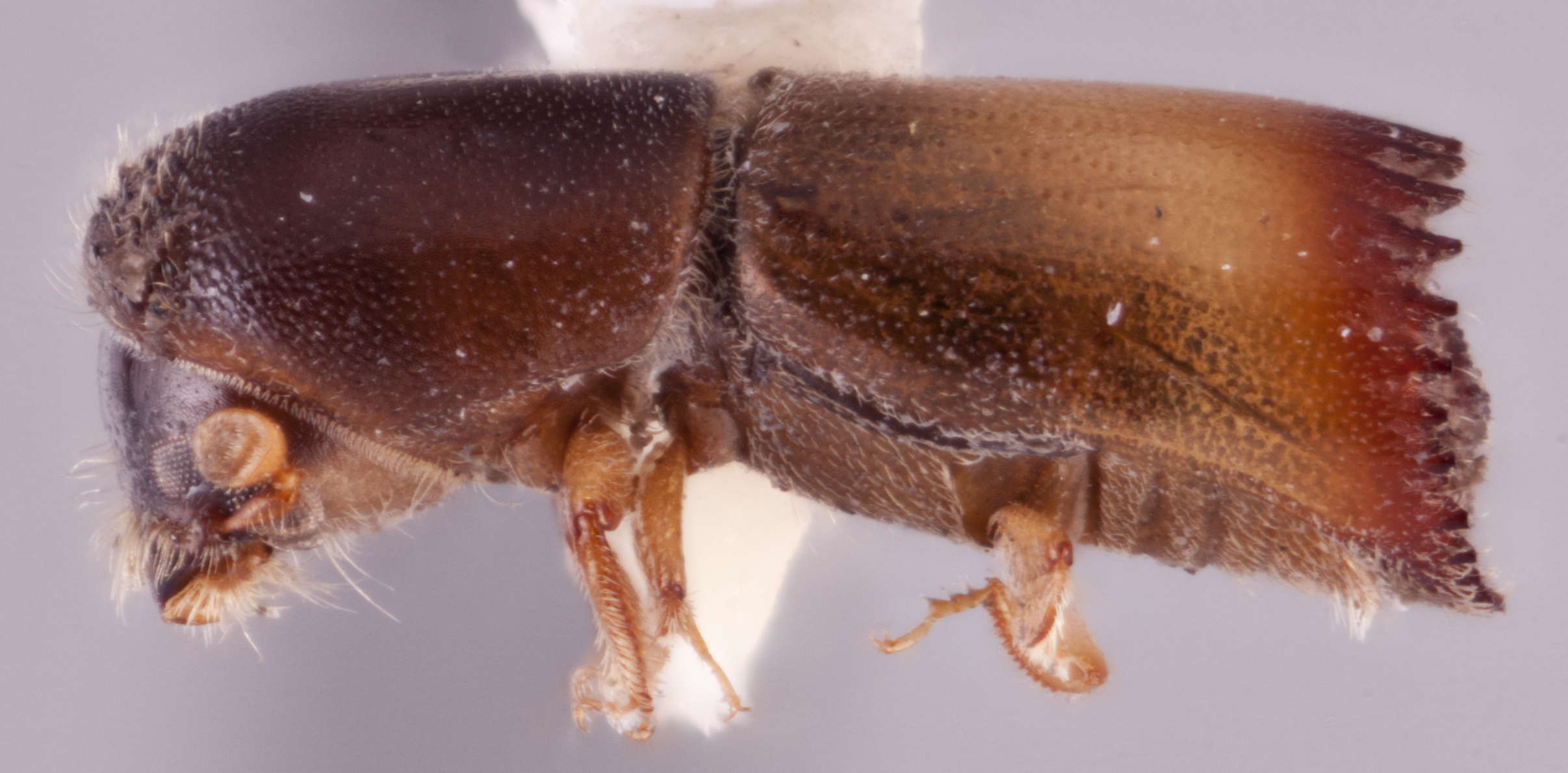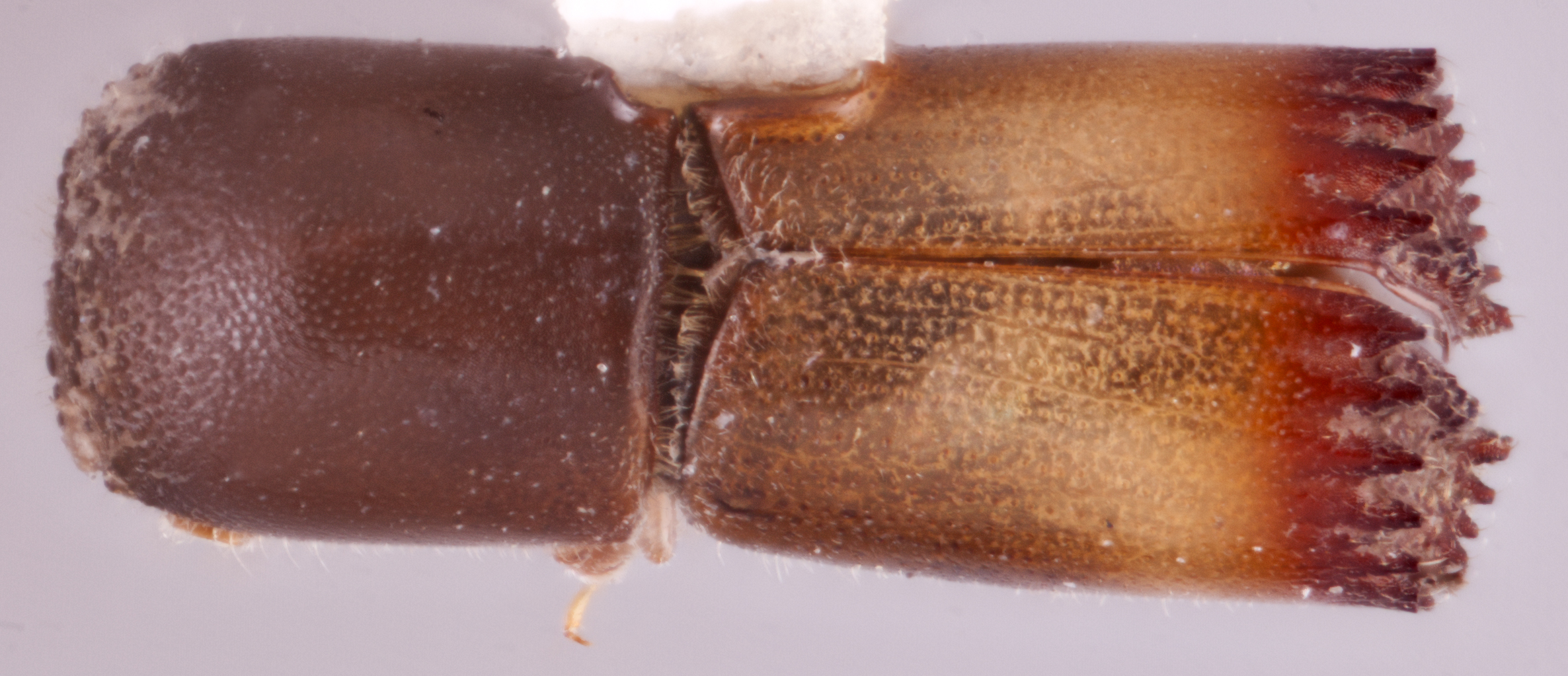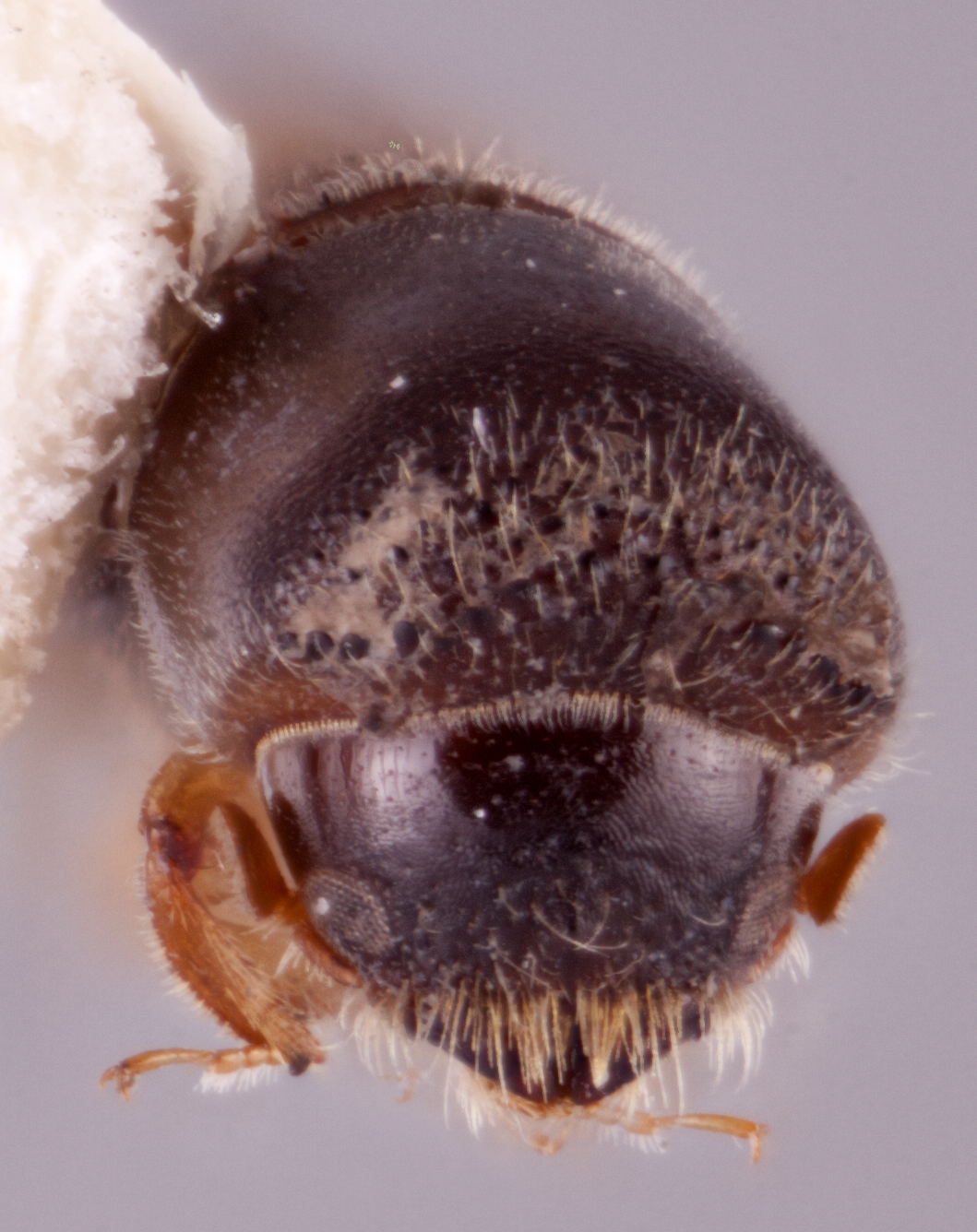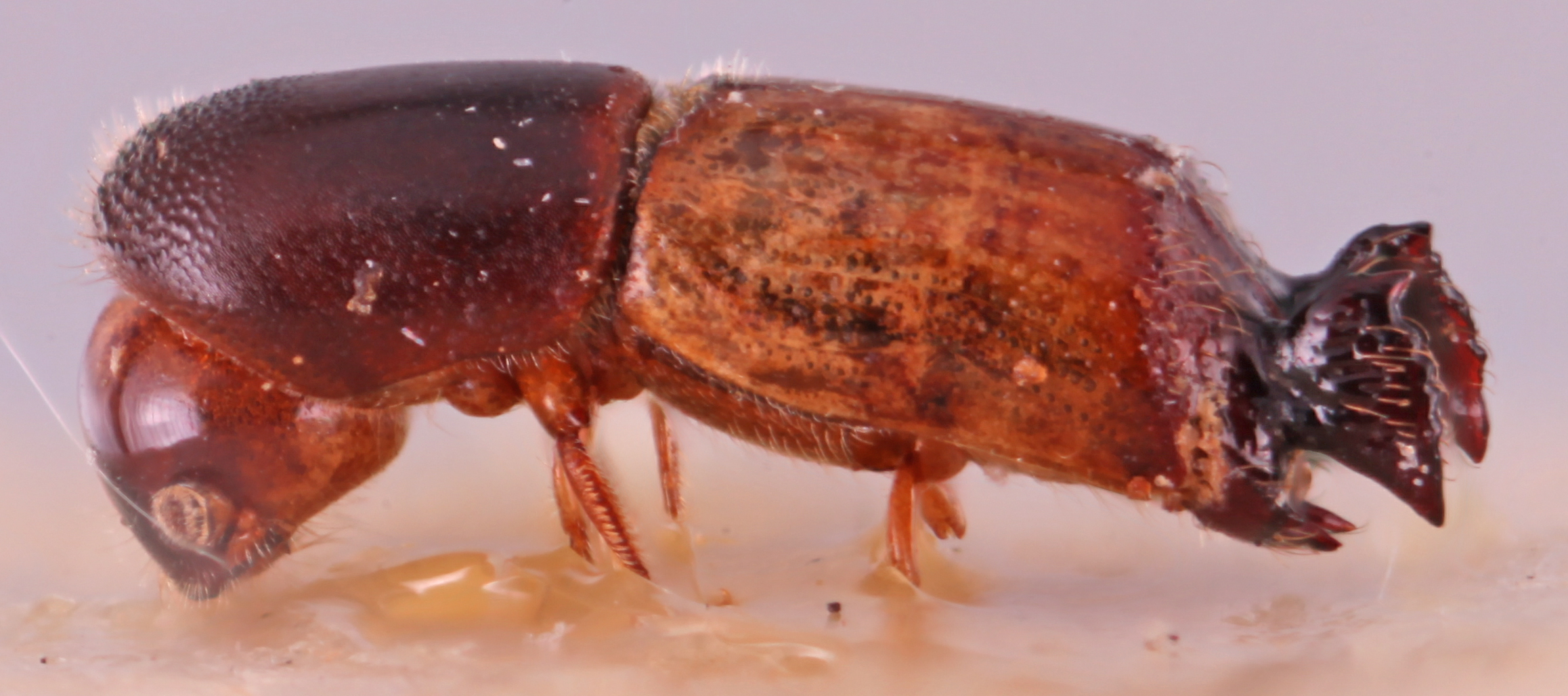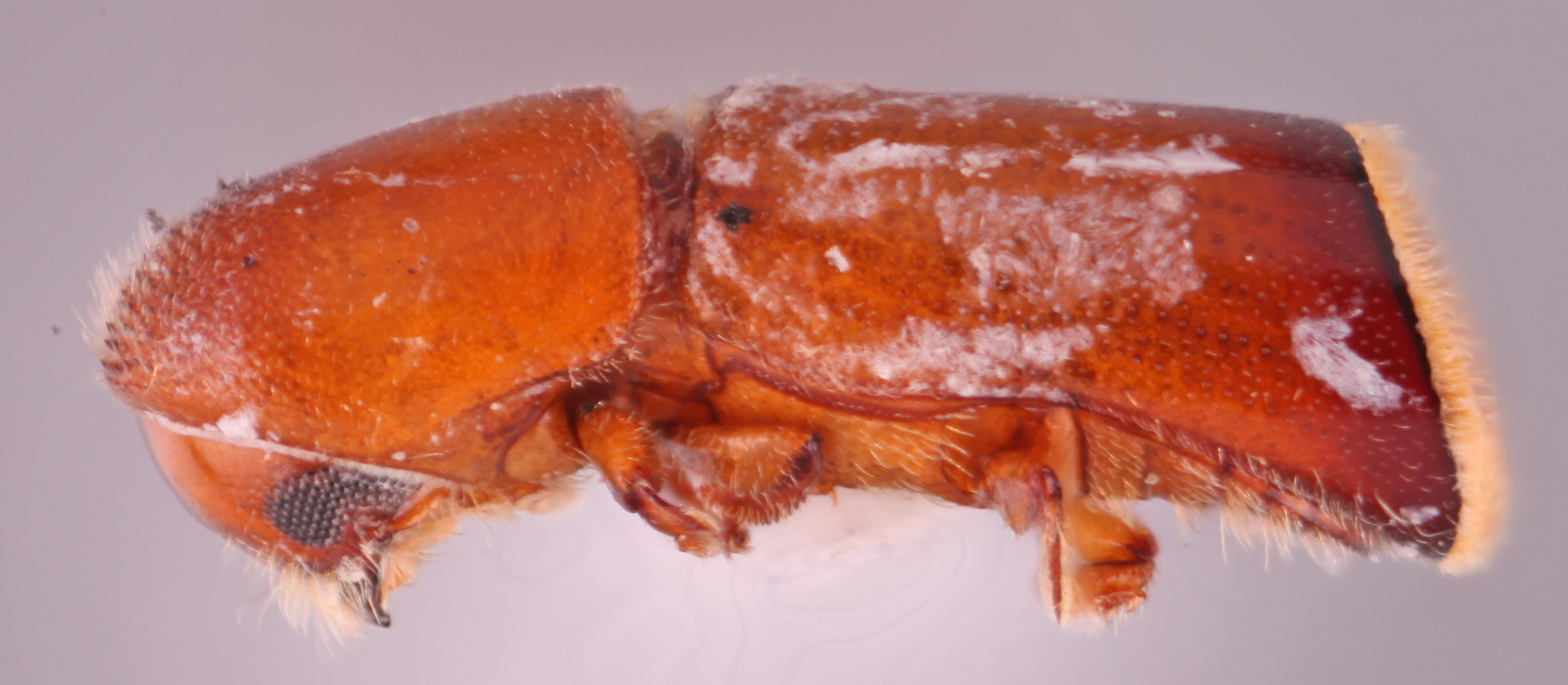Webbia
|
Webbia trigintispinata; R.K. Osborn |
|
Webbia trigintispinata; R.K. Osborn |
|
Webbia trigintispinata; R.K. Osborn |
|
Webbia trigintispinata; R.K. Osborn |
|
Webbia biformis; S.M. Smith |
|
Webbia dasyura; R.K. Osborn |
Taxonomy
Webbia Hopkins, 1915b: 222.
Synonyms
Xelyborus Schedl, 1939a: 349. Browne, 1963: 57.
Prowebbia Browne, 1962: 208. Browne, 1972: 25.
Diagnosis
1.90−3.40 mm long, 2.6−3.75 times as long as wide. Webbia can be distinguished by the scutellumscutellum:
a shield-like sclerotized plate located at the midpoint of the elytral base
narrow, minute, convexconvex:
appearing rounded , and slightly raised above elytra; dense tuft of setaeseta:
, and slightly raised above elytra; dense tuft of setaeseta:
small hair-like or scale-like structure
present along elytralelytral:
pertaining to the elytra
basebase:
point or edge closest to the body; opposite of apex associated with an elytralelytral:
associated with an elytralelytral:
pertaining to the elytra
mycangium; antennalantennal:
pertaining to the antennae
funicle 2-segmented; protibiaprotibia:
tibia of the first pair of legs
slender, laterallateral:
pertaining to the side
 margin armed with more than 9 denticlesdenticle:
margin armed with more than 9 denticlesdenticle:
a small tooth, the sides of which are equal and the tip is above the middle of the base , posteriorposterior:
, posteriorposterior:
toward the rear end; opposite of anterior
 face inflatedinflated:
face inflatedinflated:
blown up; distended
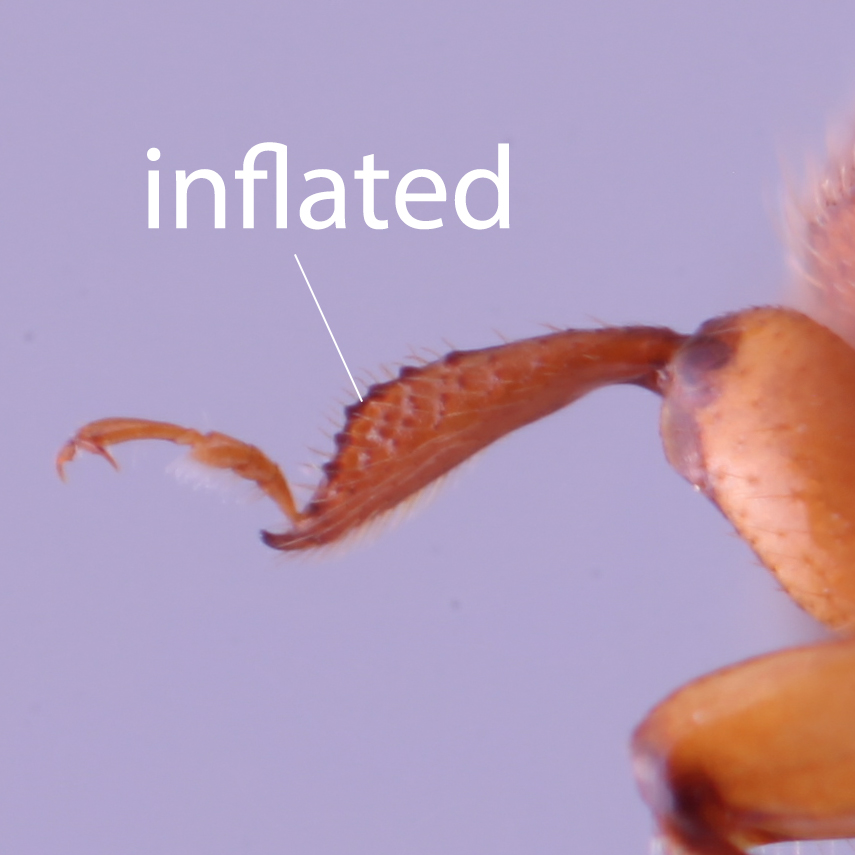 , unarmed; pronotumpronotum:
, unarmed; pronotumpronotum:
the dorsal surface of the thorax
conspicuously elongated, rectangular in dorsaldorsal:
of or relating to the upper surface; opposite of ventral
 aspect, discdisc:
aspect, discdisc:
the flat central upper surface of any body part (e.g. pronotum and elytra) flat, anterolateralanterolateral:
flat, anterolateralanterolateral:
relating to the anterior and lateral parts of the side part/portion corners inflatedinflated:
corners inflatedinflated:
blown up; distended
 (type a); elytraelytron:
(type a); elytraelytron:
the two sclerotized forewings of beetles that protect and cover the flight wings
with few setaeseta:
small hair-like or scale-like structure
, abruptly truncated, and often elaborately ornamented with large projections.
May be confused with
Amasa, Arixyleborus, Cyclorhipidion and Pseudowebbia
Distribution
throughout the Paleotropics
Gallery system
The unbranched radial entrance tunnel leads to a single large brood chamber in the longitudinal plane (Browne 1961bBrowne 1961b:
Browne FG. 1961b. The biology of Malayan Scolytidae and Platypodidae. Malayan Forest Records 22: 1-255.).
Remarks
The majority of species are strongly associated with Dipterocarpaceae, but single species are specialised on Fagaceae and Sapotaceae (Browne 1961bBrowne 1961b:
Browne FG. 1961b. The biology of Malayan Scolytidae and Platypodidae. Malayan Forest Records 22: 1-255.).

